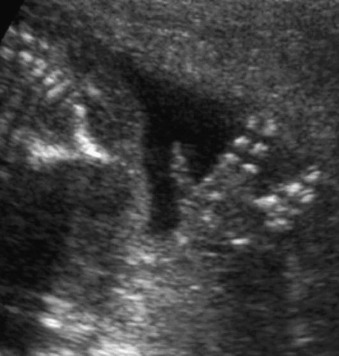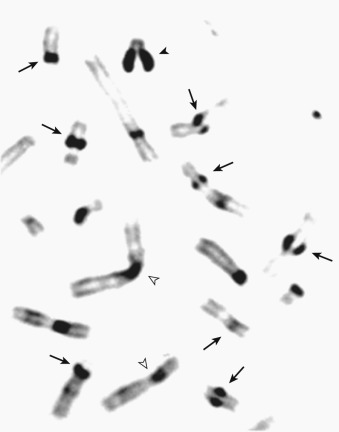Abstract
Roberts syndrome is a rare genetic disorder characterized by fetal growth restriction, limb reductions, and craniofacial abnormalities. Upper extremities are more severely affected than lower extremities. It is caused by mutations in the ESCO2 gene, resulting in loss of acetyltransferase activity and manifesting as premature centromere separation in metaphase chromosomes. Diagnosis is made from cytogenetic testing of individuals with suggestive clinical findings. There is a wide clinical variability among affected individuals, and prognosis generally depends on the malformations present. Mortality rates are high among severely affected fetuses and newborns. Termination of pregnancy may be offered when the diagnosis is made before viability. Postnatal treatment is tailored to the affected individual’s specific needs, including surgical reconstructive procedures, speech therapy, and targeted treatment for specific cardiac defects.
Keywords
fetal growth restriction, limb reductions, craniofacial abnormalities
Introduction
Roberts syndrome, also known as Roberts-SC phocomelia syndrome or pseudothalidomide syndrome, is a rare genetic disorder characterized by prenatal growth restriction, limb reductions, and craniofacial abnormalities. The upper extremities are more severely affected than the lower extremities, with common limb abnormalities including bilateral symmetric tetraphocomelia or hypomelia. Other limb malformations, such as oligodactyly, syndactyly ( Fig. 140.1 ), clinodactyly, and elbow and knee flexion contractures, may also be seen. Craniofacial abnormalities include cleft lip/palate, premaxillary protrusion, micrognathia, malar hypoplasia, slanting palpebral fissures, ocular hypertelorism, exophthalmos, corneal clouding, nasal alae hypoplasia, beaked nose, and ear malformations.

Definition
Based on a cohort of 49 patients with confirmed diagnosis by genetic analysis, Vega et al. established the clinical criteria for the diagnosis of Roberts syndrome as growth restriction, symmetric mesomelic shortening of the limbs with upper limbs more commonly and severely affected than lower limbs, and characteristic facies with microcephaly.
Prevalence and Epidemiology
Roberts syndrome is a rare disorder with no accurate estimates of prevalence. Fewer than 200 individuals of diverse racial and ethnic backgrounds have been reported in the literature. Parental consanguinity is common in affected cases.
Etiology and Pathophysiology
Roberts syndrome is caused by mutations in the es tablishment of the co hesion 1 homologue 2 (ESCO2) gene located on chromosome 8. ESCO2 is the only known gene with mutations associated with Roberts syndrome, and all individuals with cytogenetically diagnosed Roberts syndrome have had mutations in this gene. This gene encodes a protein belonging to the Eco1 family of acetyltransferases that is involved in sister chromatid cohesion during the S phase and postreplicative sister chromatid cohesion. Mutations in the gene result in loss of ESCO2 acetyltransferase activity. This loss of function manifests as premature centromere separation or separation of the heterochromatic regions in most metaphase chromosomes. This separation is seen in standard cytogenetic preparations stained with Giemsa or C-banding techniques ( Fig. 140.2 ). As a result, cell division is slow, and daughter cells are typically aneuploid, leading to the malformations associated with Roberts syndrome. It is transmitted in an autosomal recessive pattern.











